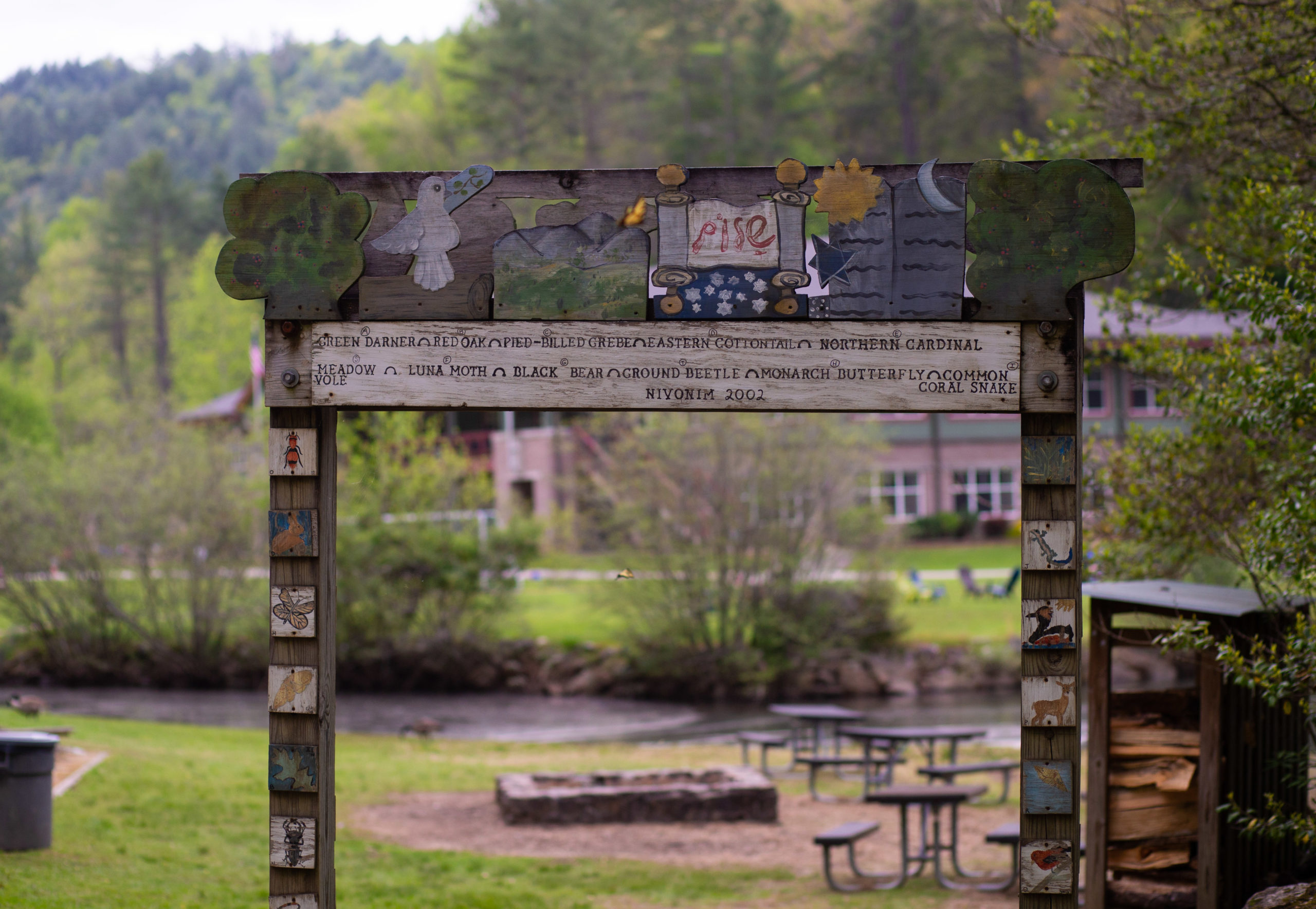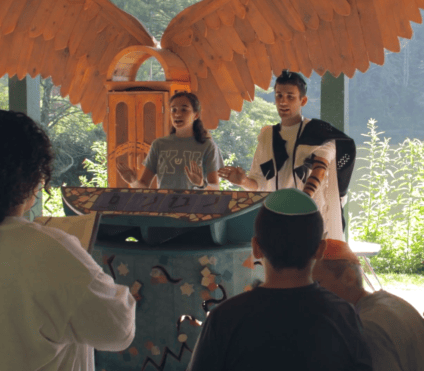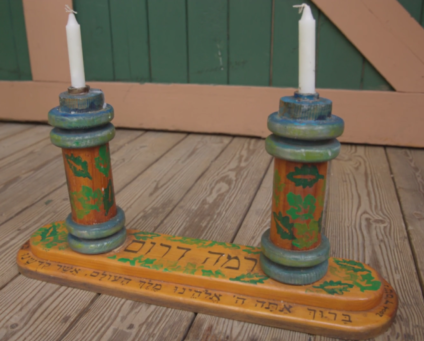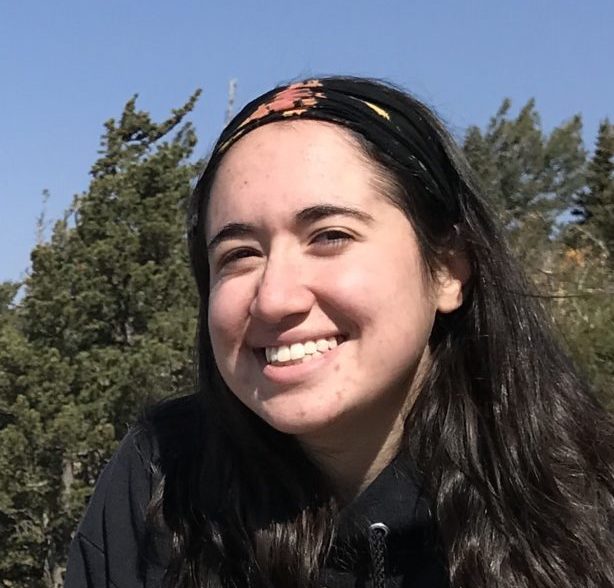
Let’s take a walk around Ramah Darom together. We start at the Margam (Lakefront Pavilion), pass by the medura (firepit), loop through the Beit Knesset (Sanctuary) and head upstairs to the Chadar Ochel (Dining Hall) before exiting and making our way to the Beit Am (Covered Basketball Court) and up the hill to the MarHar (Mountainside Pavilion). I can’t be sure exactly how you pictured your walk, or maybe you’ve never been to Camp and you had to imagine it for yourself, and that’s okay. What pops into my mind when I visualize all of these places is the art created by chanichim (campers) over the years. Shtenders, Aronot Kodesh, Torah covers and Hagbah chairs–all cut, assembled, painted and signed by former chanichim. It’s amazing that at Ramah Darom, all of our holiest spaces were crafted by the people who grew up learning in them at Camp.
 Long before Ramah Darom, right after the Israelites received the Ten Commandments, Moshe instructed the Israelites to build the Mishkan, the traveling Tabernacle, which they would transport throughout their years in the desert. In Parshat Vayakhel, Moshe described all of the pieces that will go inside the Mishkan – furniture, drapery, altars, arks and tables. And when Moshe asked for the people to donate their possessions to help build the Mishkan, they gave so enthusiastically that he had to demand that they stop! (Basically, the Israelites were so excited to have a place to pray, and to build a center for their community, that they gave too many gifts!)
Long before Ramah Darom, right after the Israelites received the Ten Commandments, Moshe instructed the Israelites to build the Mishkan, the traveling Tabernacle, which they would transport throughout their years in the desert. In Parshat Vayakhel, Moshe described all of the pieces that will go inside the Mishkan – furniture, drapery, altars, arks and tables. And when Moshe asked for the people to donate their possessions to help build the Mishkan, they gave so enthusiastically that he had to demand that they stop! (Basically, the Israelites were so excited to have a place to pray, and to build a center for their community, that they gave too many gifts!)
While I’m sure anyone who works in fundraising for a Jewish organization finds it unbelievable, I think it’s easy to understand what the people were thinking. Because for the next 40 years, when they entered the Mishkan and saw all of its ornaments and holiest spaces, they knew that they had helped contribute to it. The Israelites felt more holy because the Mishkan tied them together as a spiritual community, and the Mishkan was able to bring them together spiritually because they had built it.
 Ramahniks haven’t been wandering for quite as long as the ancient Israelites. Still, it has been longer than many of us are used to since we have laid eyes on our beautiful campus and run our hands over the delicately crafted artwork in our prayer spaces. However, in the time we’ve been physically apart, we have not stopped being a spiritual community. Yes, our holy spots at Camp are meaningful because they were created by 15-year-old chanichim. But those chanichim, and others, are now out in the world contributing to their Jewish communities because they had the experience of learning tefillot (prayer) at Ramah Darom.
Ramahniks haven’t been wandering for quite as long as the ancient Israelites. Still, it has been longer than many of us are used to since we have laid eyes on our beautiful campus and run our hands over the delicately crafted artwork in our prayer spaces. However, in the time we’ve been physically apart, we have not stopped being a spiritual community. Yes, our holy spots at Camp are meaningful because they were created by 15-year-old chanichim. But those chanichim, and others, are now out in the world contributing to their Jewish communities because they had the experience of learning tefillot (prayer) at Ramah Darom.
The Mishkan was vital to the creation of the People of Israel. While it served as the center of their community, the community did not wither just because we have no more Mishkan. Much like, without being physically at Camp in such a long time, we have not lost our connection to it. Instead, we have been encouraged to remember that our connection was to more than just the land and the furniture on it, but the things we learned and the ways we grew when we were there.
 I cannot wait to take the exact walk that I described above when I return to Ramah Darom this summer. When I see the art that my madrichim (counselors), my chaverim (friends) and my chanichim created, I’ll appreciate how it helped us form this community. A community so strong that we could grow and support each other, even when we were far away. Our connection has transcended the need to be at Camp, but just like the Jews in the desert, we are ready to give whatever we can to make it beautiful – not just for us but also for everyone who will come after us.
I cannot wait to take the exact walk that I described above when I return to Ramah Darom this summer. When I see the art that my madrichim (counselors), my chaverim (friends) and my chanichim created, I’ll appreciate how it helped us form this community. A community so strong that we could grow and support each other, even when we were far away. Our connection has transcended the need to be at Camp, but just like the Jews in the desert, we are ready to give whatever we can to make it beautiful – not just for us but also for everyone who will come after us.
Liana Slomka, Ramah Service Corps Fellow
Thanks to the Harold Grinspoon Foundation “All Together Now 2021” challenge match, your donation to the Ramah Darom Annual Fund will now go 50% further to support camper scholarships, ensure a safe summer for our Camp community and maintain and enhance our beautiful campus.
